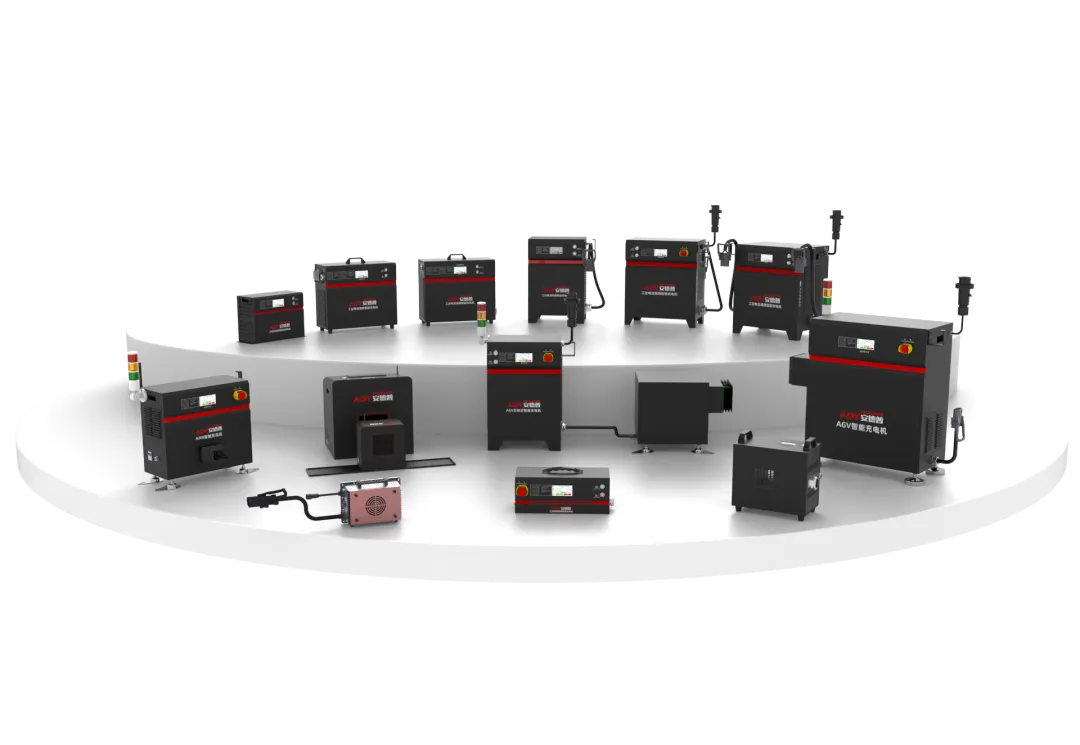Blog
Six Emerging Trends in Industrial Charging Technology
2025-06-28 | Eric

As industrial automation accelerates, charging systems are no longer just power sources—they are evolving into critical infrastructure for smart factories. Whether it’s electric forklifts, AGVs, or intelligent warehouse robots, efficient and reliable charging is now a top priority.
Let’s explore six major trends shaping the future of industrial charging technology in 2025 and beyond.
1. Integration and Miniaturization: Compact but Powerful
- High-integration power modules reduce circuit complexity
- Optimized PCB layouts allow more compact designs
- Ideal for tight factory spaces or mobile deployment
Key takeaway: Expect chargers that pack more punch in smaller packages.
2. Wireless Charging: No Contact, No Hassle
- Enables “opportunity charging” during short operation breaks
- Eliminates wear-and-tear from connectors
- Reduces failure rates and maintenance needs
Why it matters: A safer, cleaner, and more automated energy supply chain is on the horizon.
3. High Power & Fast Charging: Just Like Smartphones
- Wide adoption of fast-charging technology similar to mobile phones
- Silicon Carbide (SiC) and Gallium Nitride (GaN) components improve efficiency
- Smart control algorithms reduce energy loss and downtime
Result: Shorter charging cycles mean higher productivity and lower operational costs.
4. Smarter and More Automated: AI-Powered Charging Systems
- Remote monitoring via mobile or desktop interfaces
- AI-based algorithms optimize charging based on battery health and usage
- Real-time alerts and diagnostics minimize unplanned downtime
Use case: Logistics firms using smart charging report 40% fewer failures and 3x faster maintenance response.
5. Standardization and Compatibility: One Charger for All
- Standardized output voltages, connectors, and communication protocols
- Seamless compatibility with multiple industrial battery systems
- Simplifies purchasing and system upgrades
Industry impact: Standardization accelerates ecosystem growth and lowers integration barriers.
6. Eco-Friendly and Energy-Efficient Charging
- Energy-saving technologies like soft switching and PFC reduce consumption
- Eco-friendly materials minimize environmental impact
- Low-EMI designs protect nearby electronics and communications
Bottom line: Energy-efficient chargers align with both regulatory trends and corporate ESG goals.
Conclusion
In 2025, industrial charging is no longer just a utility—it’s a strategic enabler for automation, sustainability, and operational excellence.
Businesses that embrace smart, fast, wireless, and eco-conscious charging solutions will gain a clear competitive edge in the smart factory era.
Popular Articles
Contact Details
Worktime :Monday to Friday 9am - 6pm (HKT)
WhatsApp/Wechat/Mobile :+86XXXXX
Email : info@lifepo4cellstore.com
